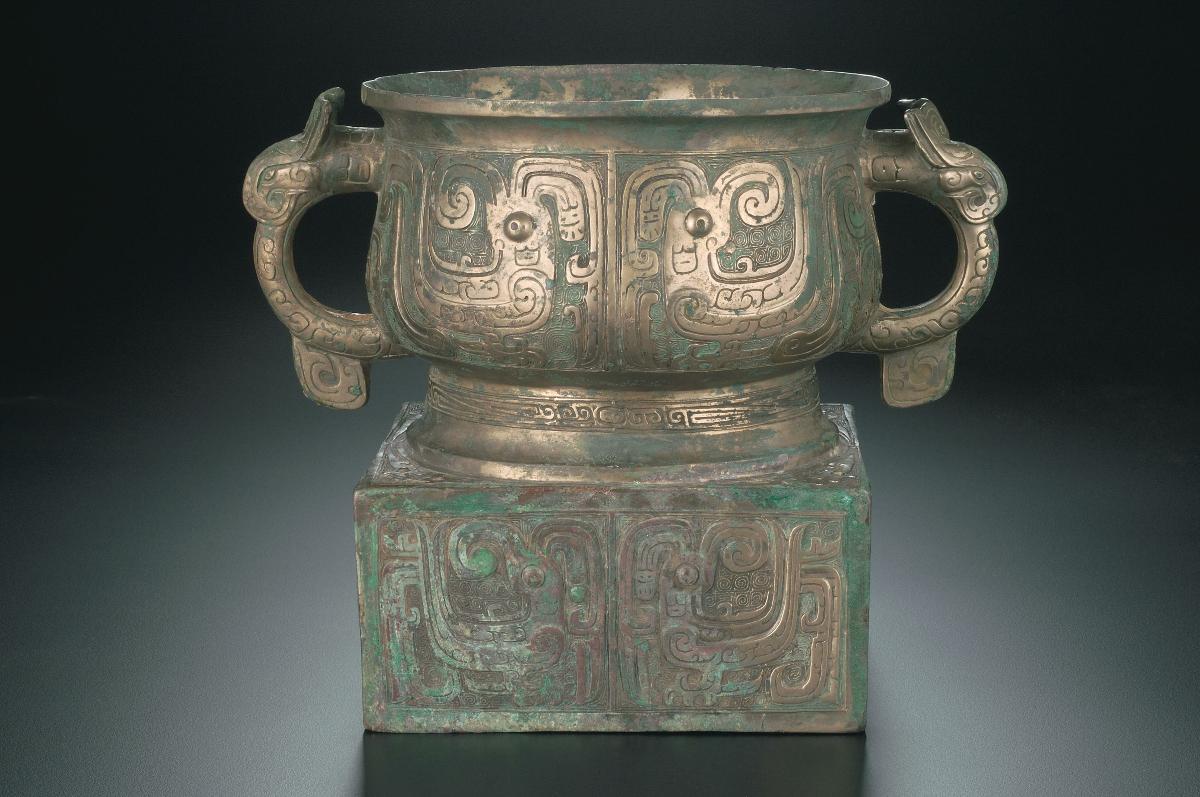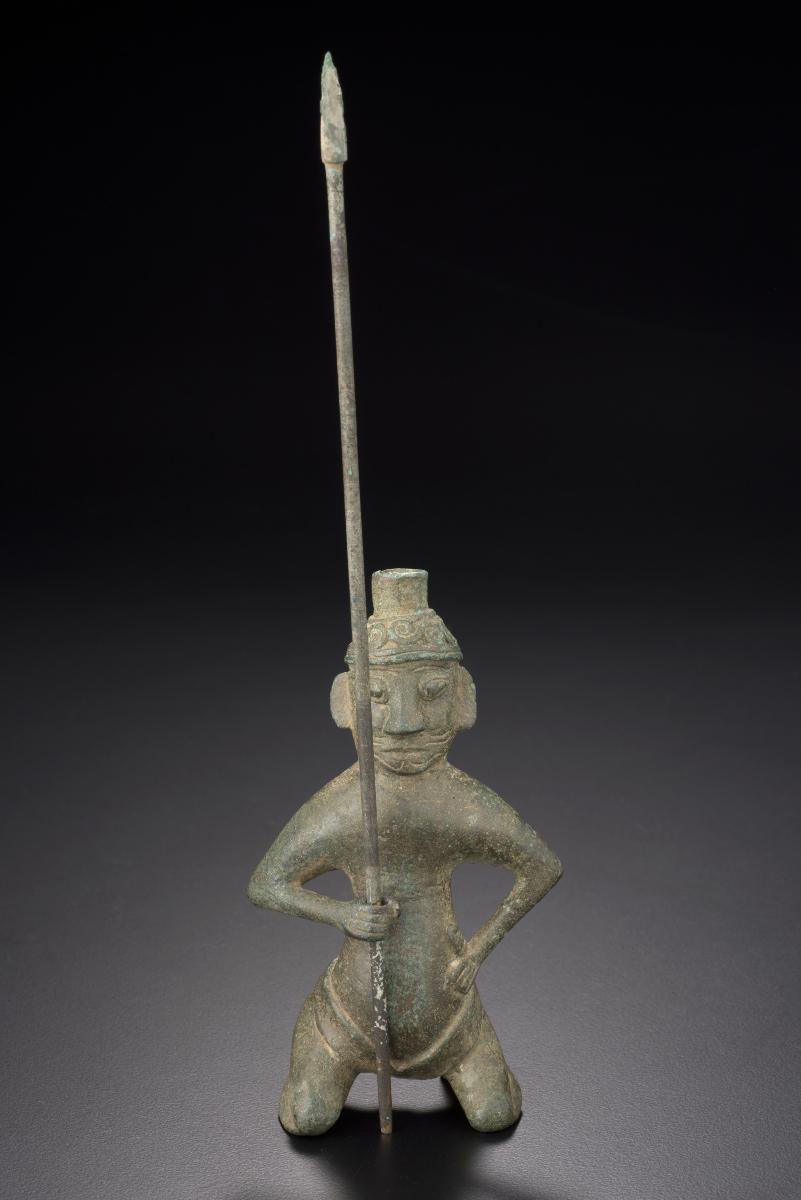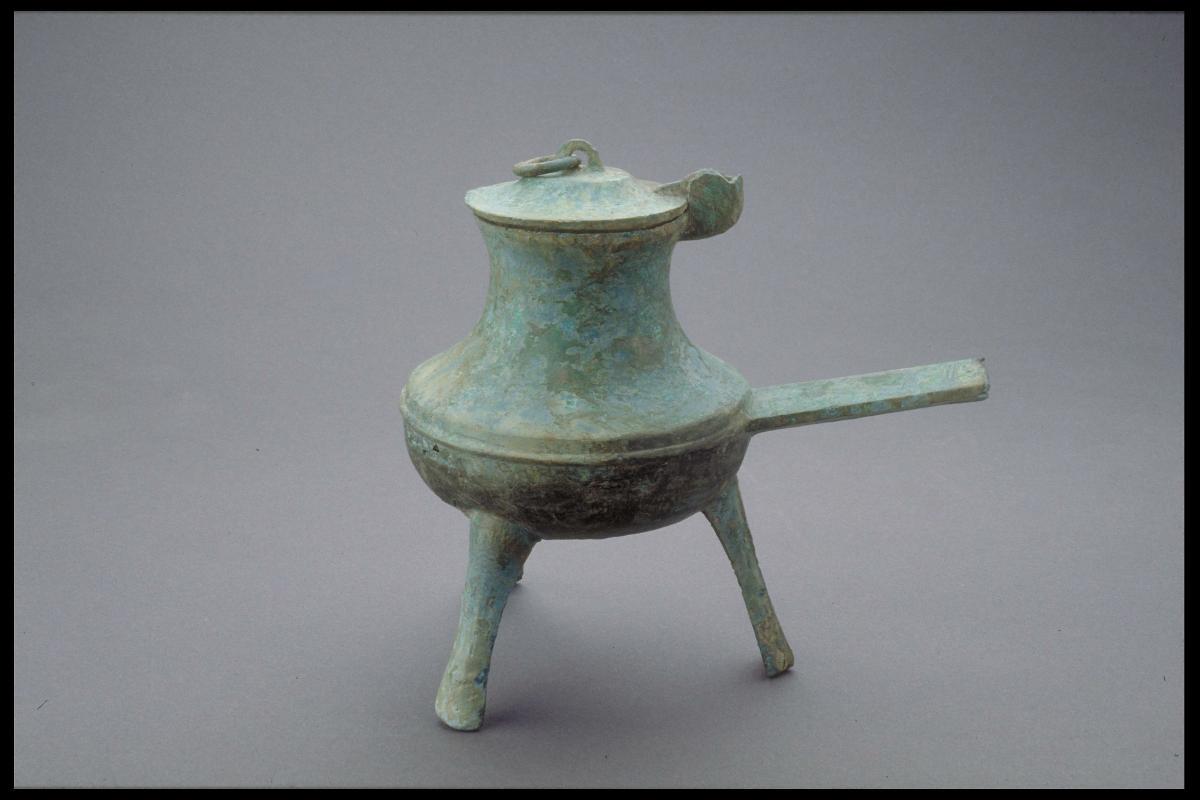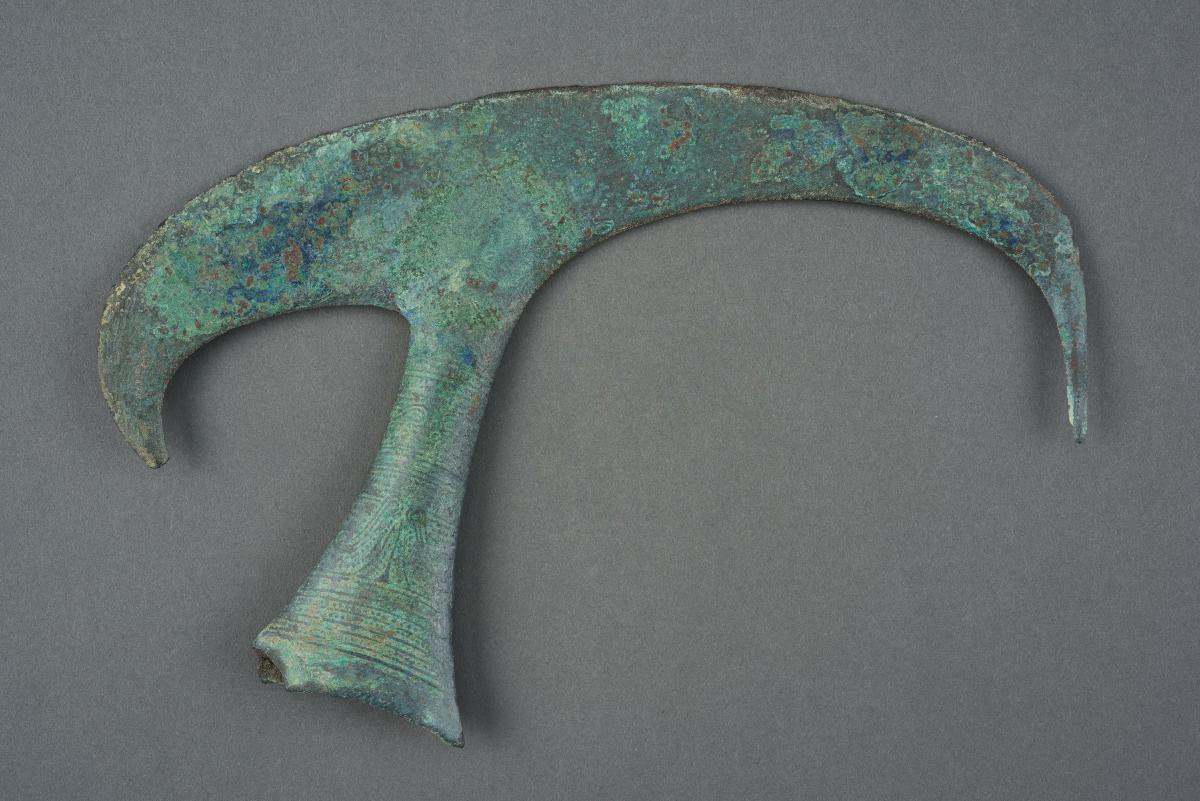This bronze ritual food vessel, known as a 'gui', was used as a container for grain and other foodstuffs, during ceremonies dedicated to the gods and ancestors. It is an excellent example of its type with finely cast bird motifs - a popular decorative element of the period. It is doubly impressive because of its form, which sees a rounded vessel atop a quadrangular pedestal base that is similarly cast with stylised birds. Furthermore, the bronze features a seven-character inscription which may be read as "芮公為旂宮寶簋" (Ruigong wei qi gong bao gui) and translated as ‘Ruigong made this precious gui vessel for the Qi palace’. ‘Ruigong’, which may be interpreted as ‘Duke of Rui’, was a political leader in the ancient Chinese state of Rui during the Zhou period. This highlights the political and social significance of bronze vessels. Bronzes served as statements of prestige and the continuity of authority within a family or state.















